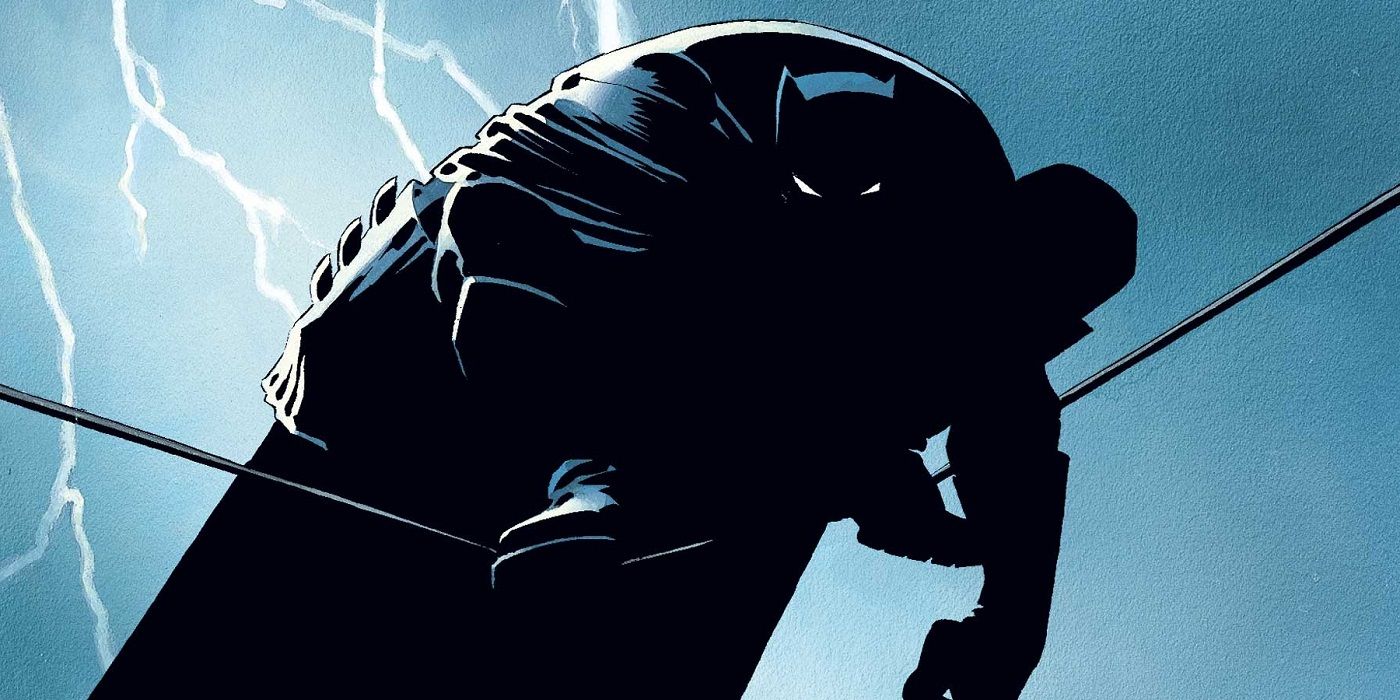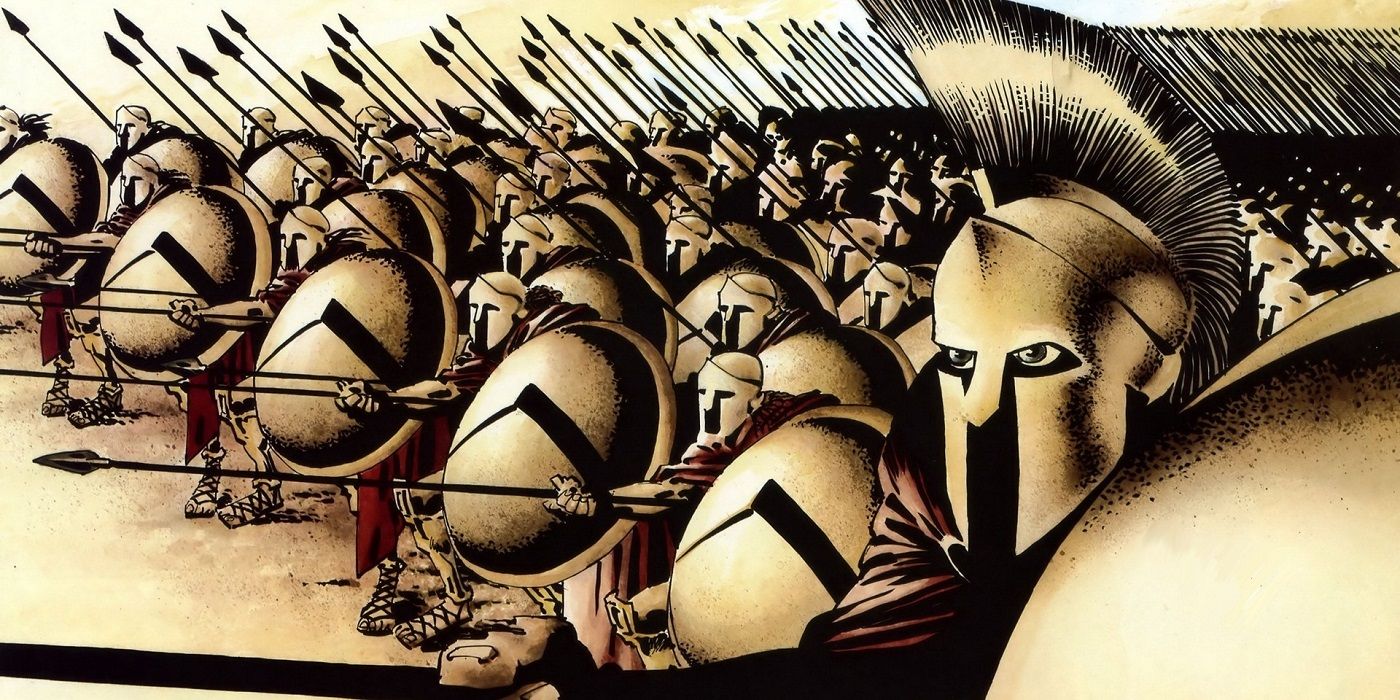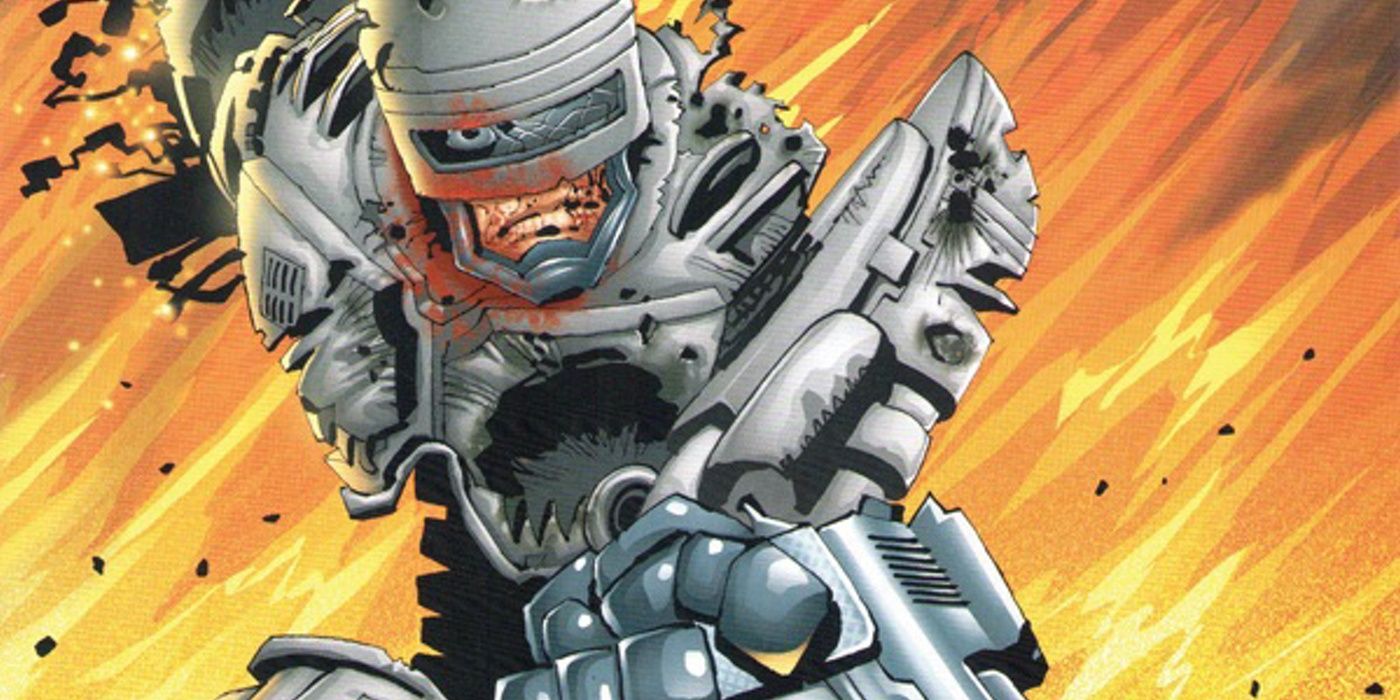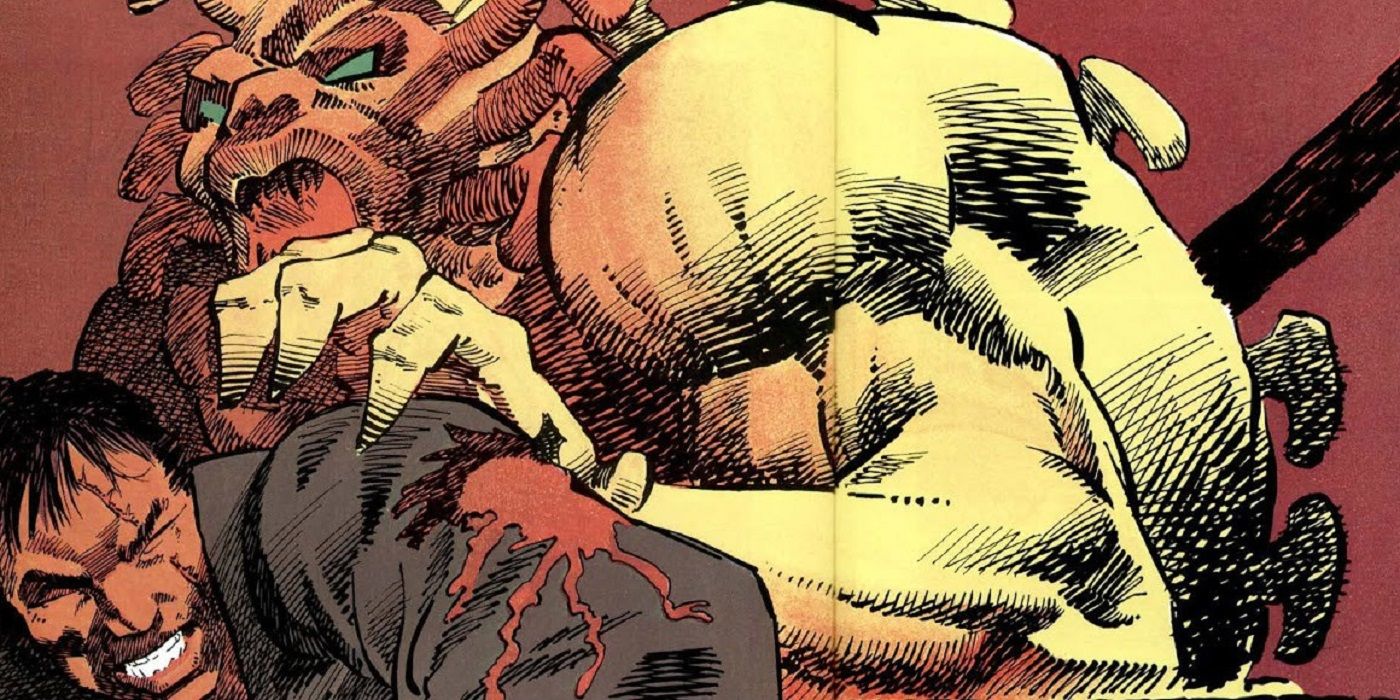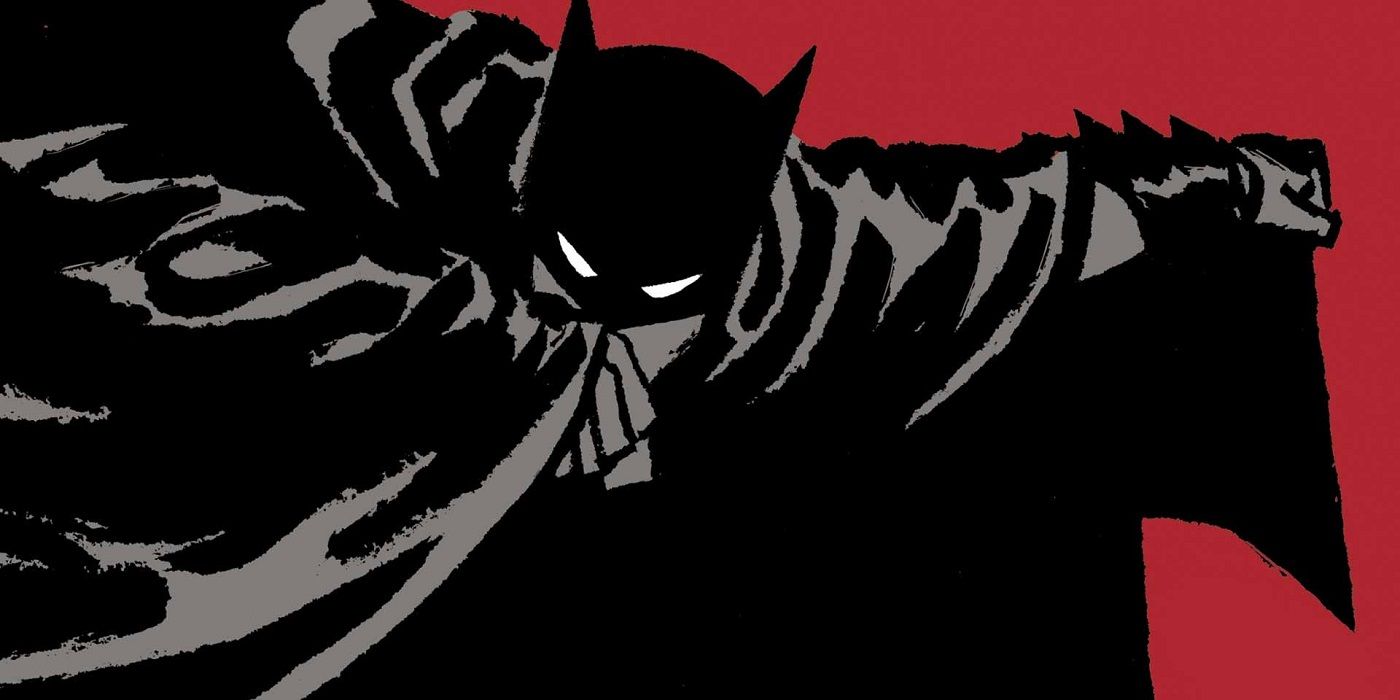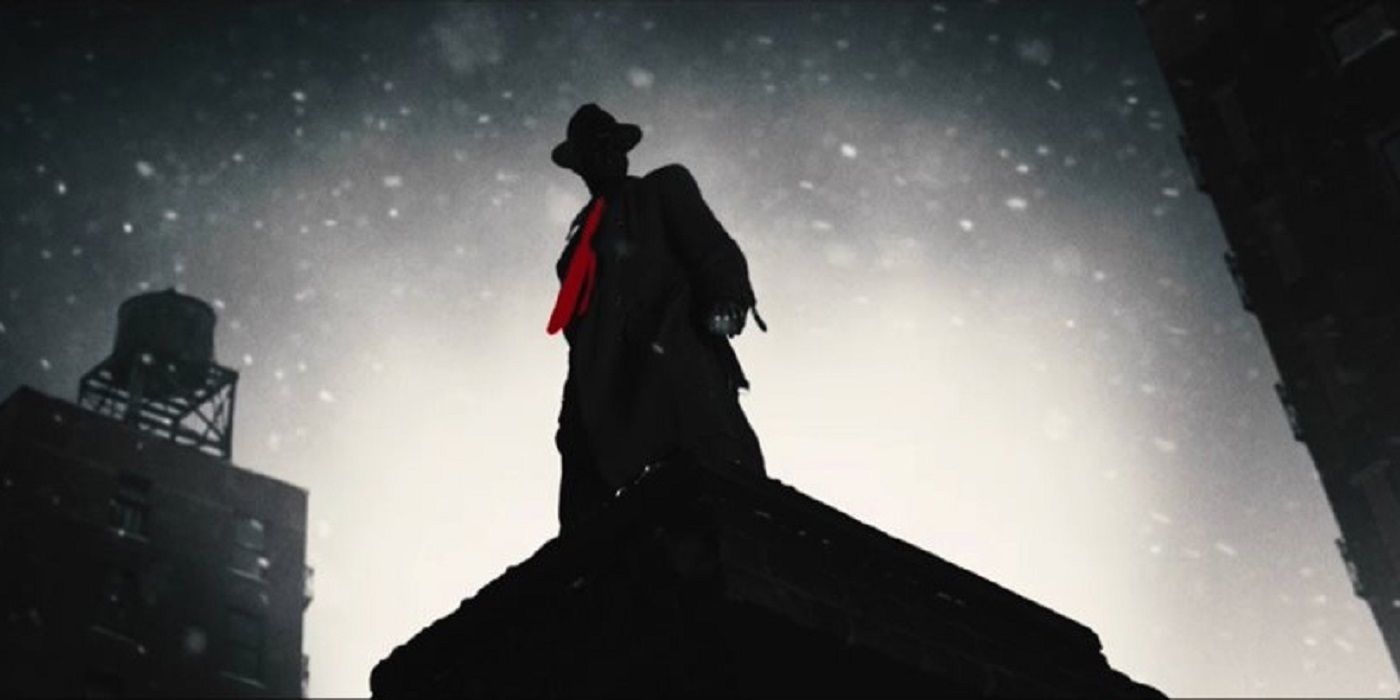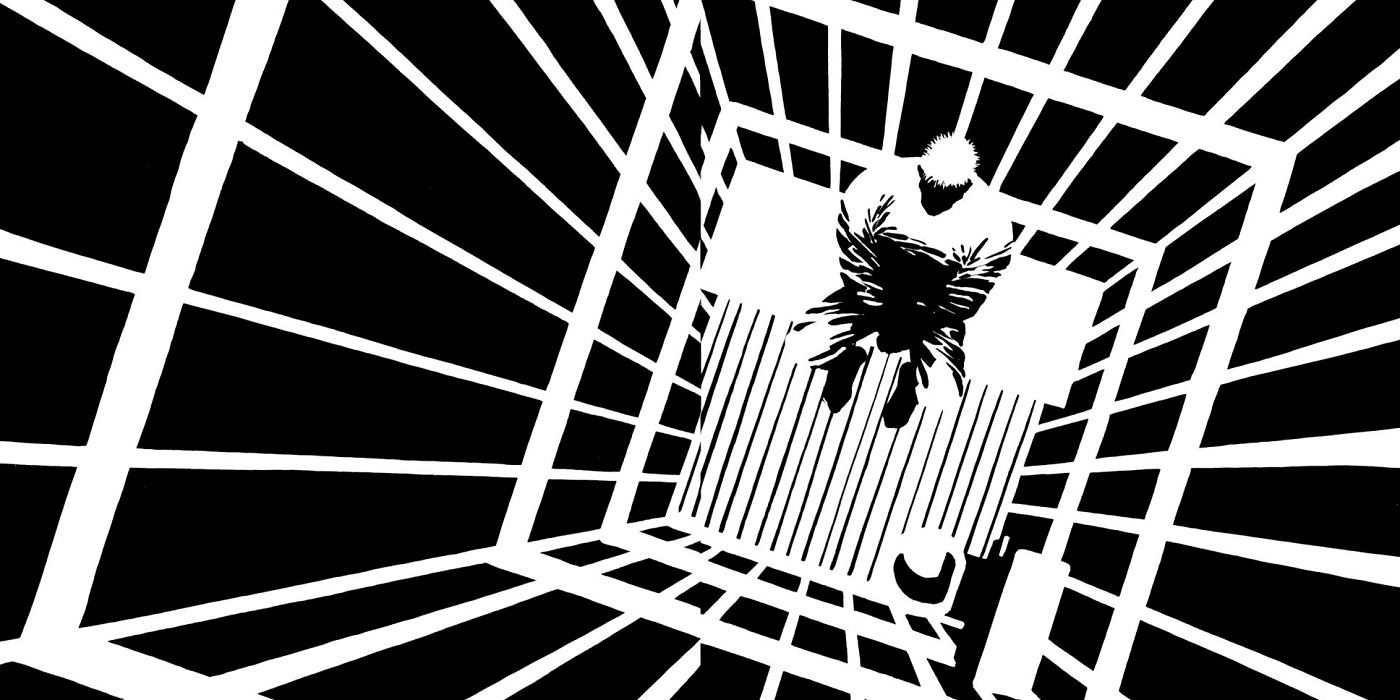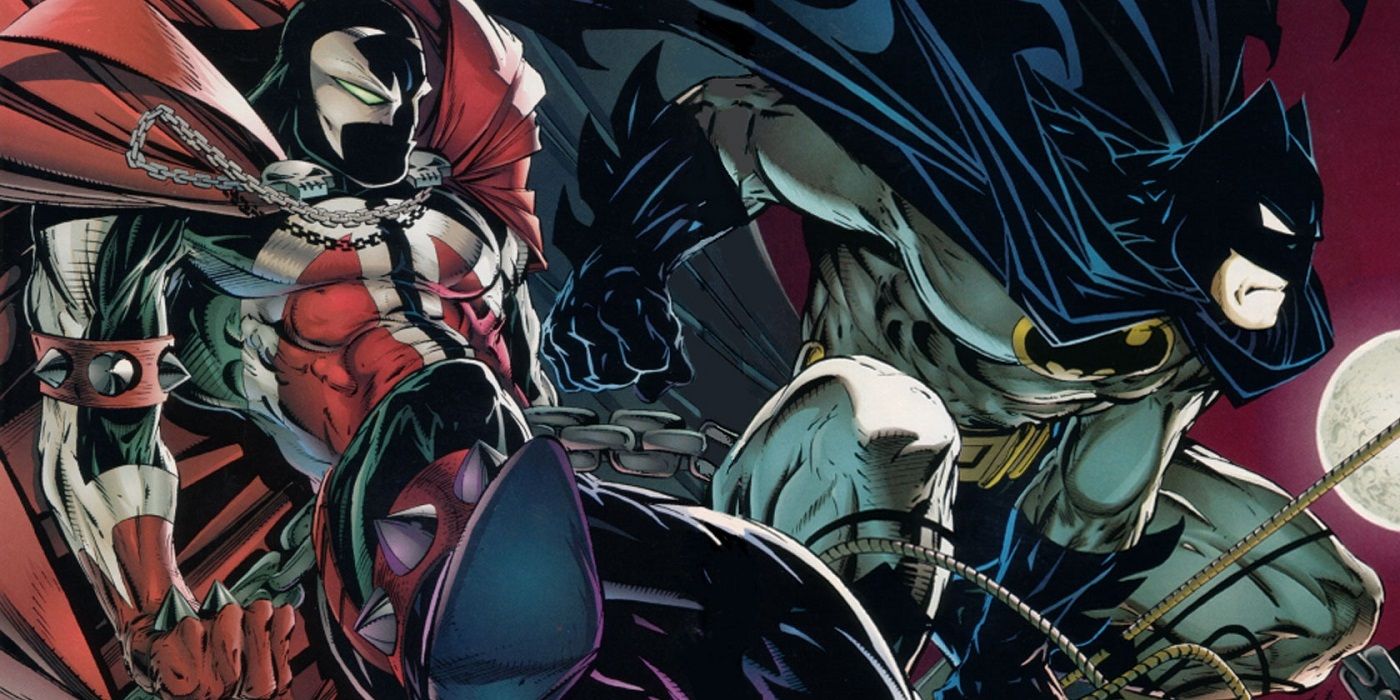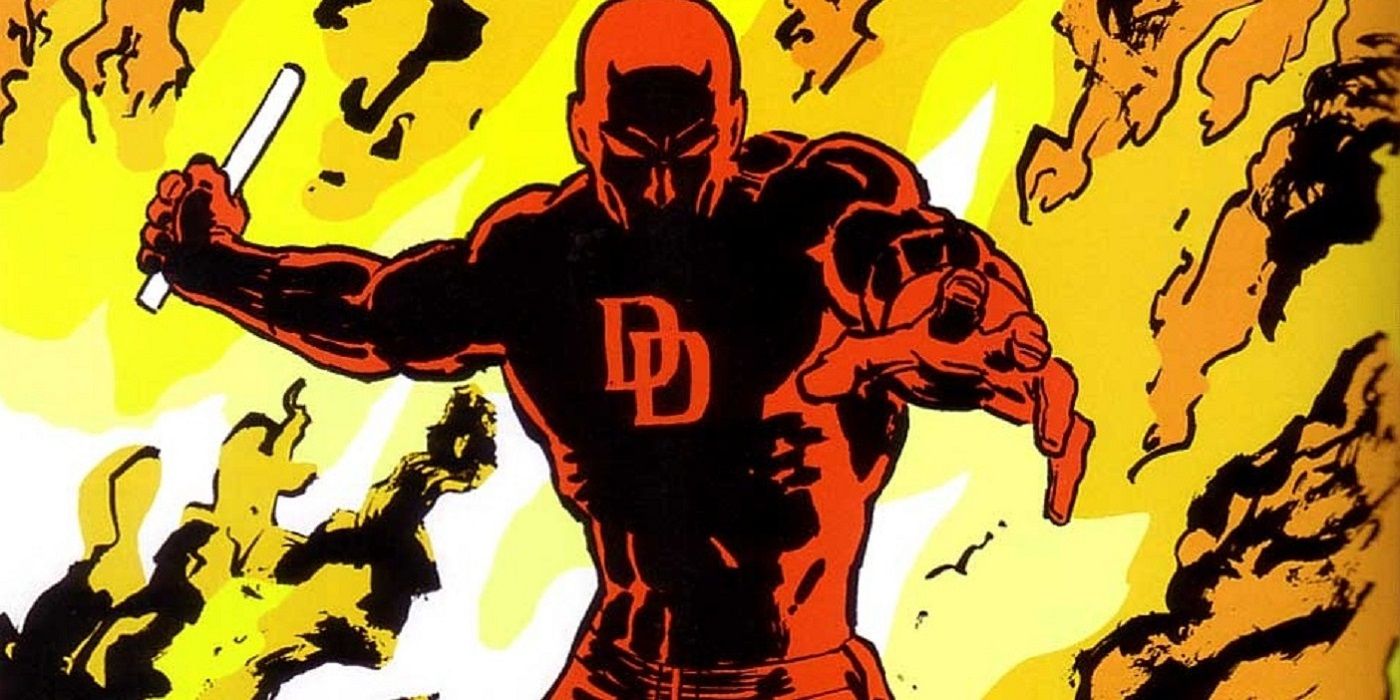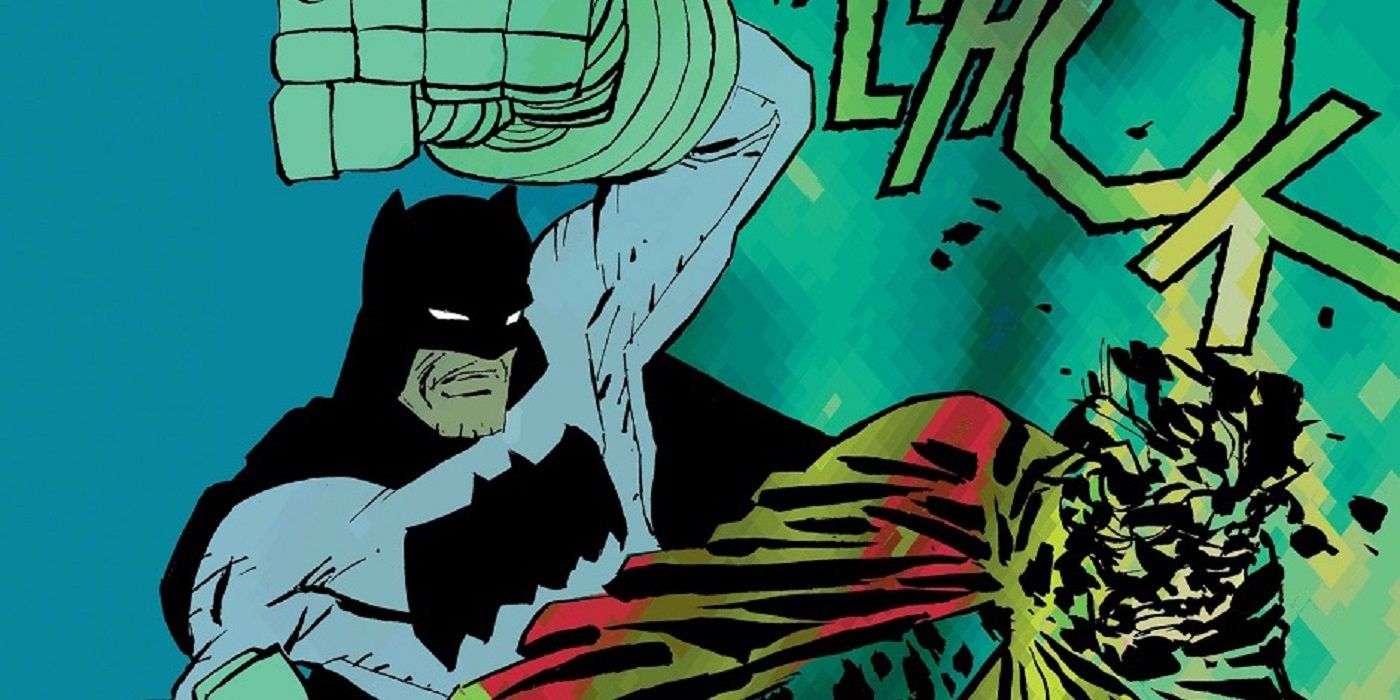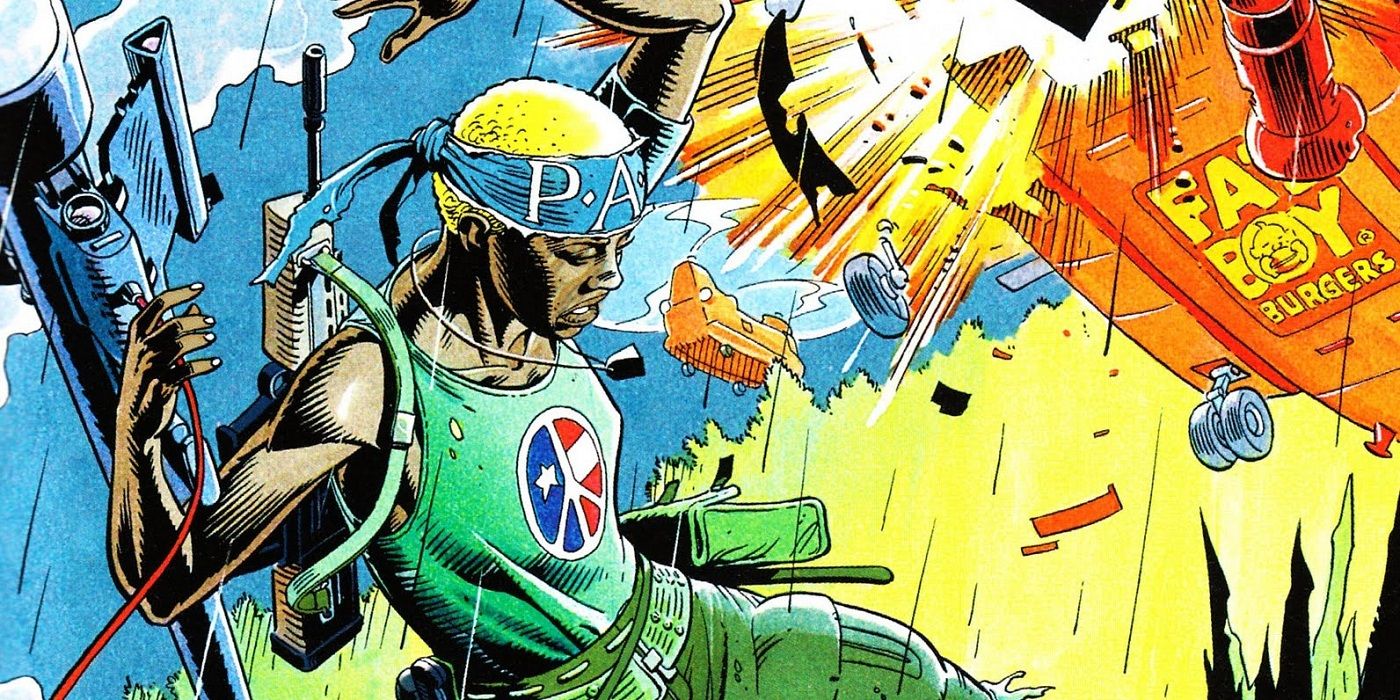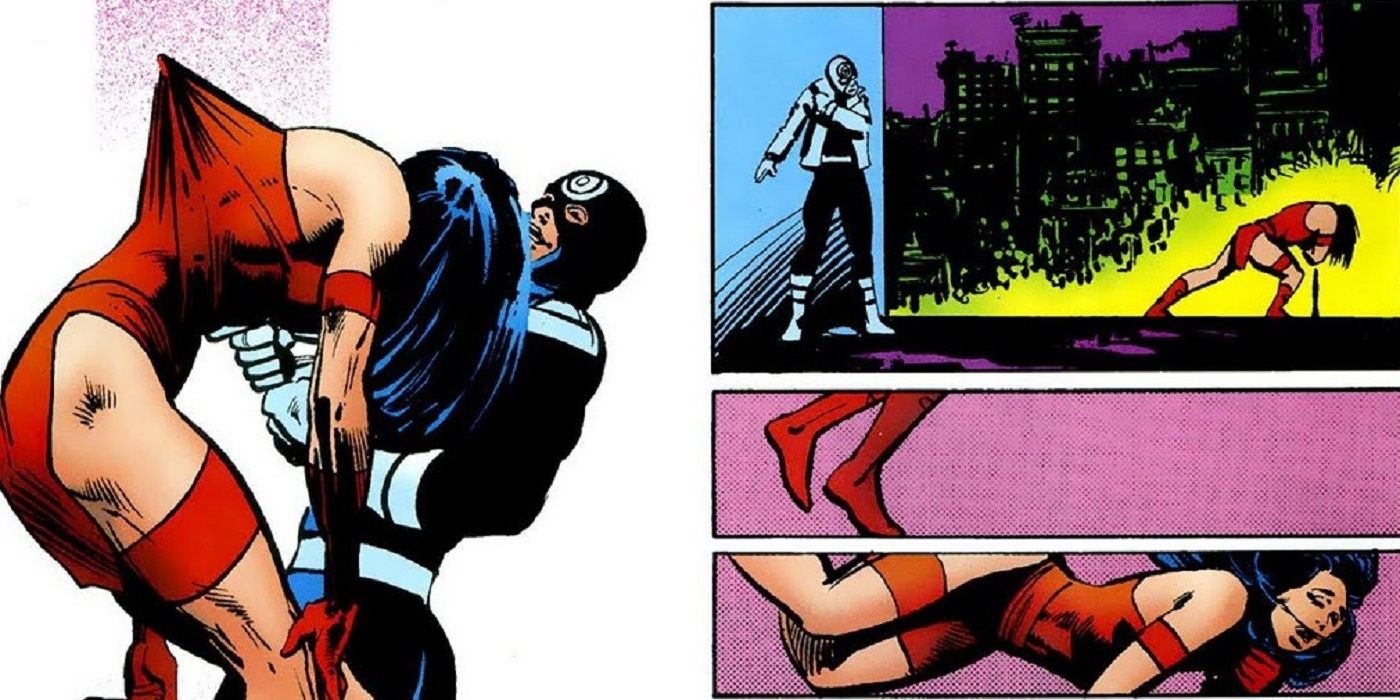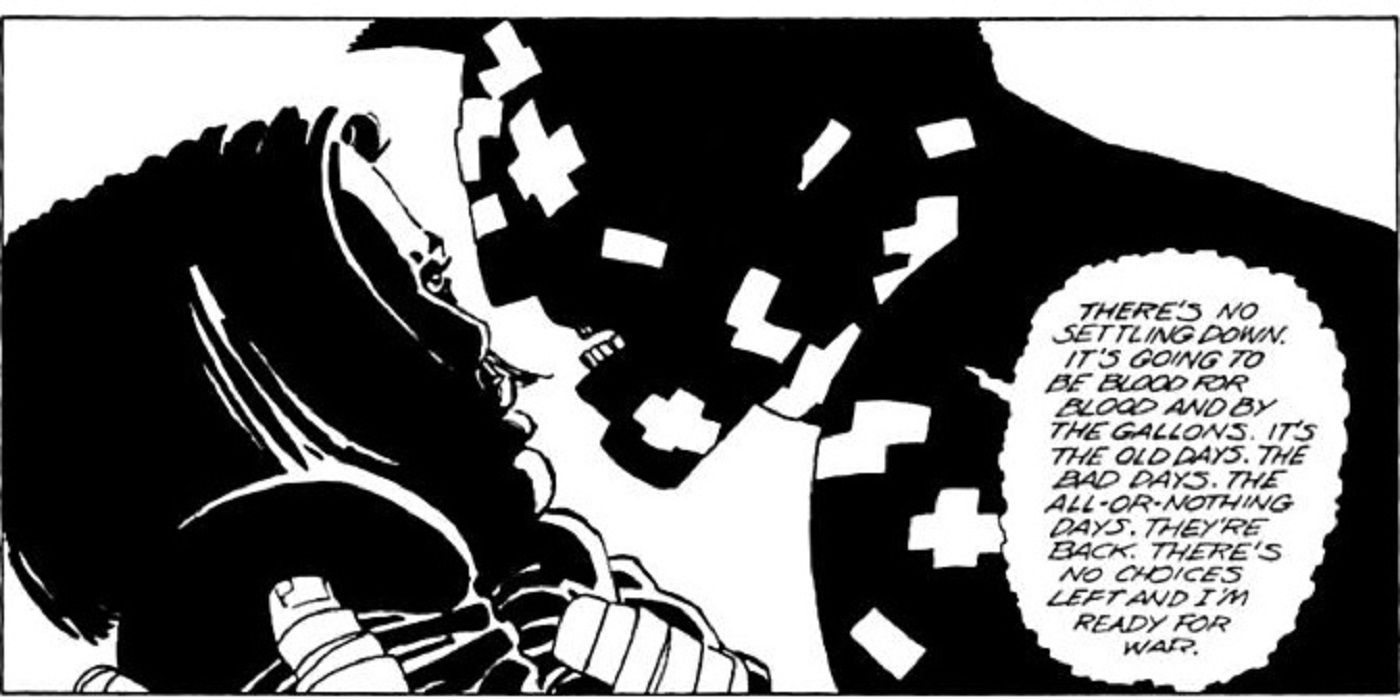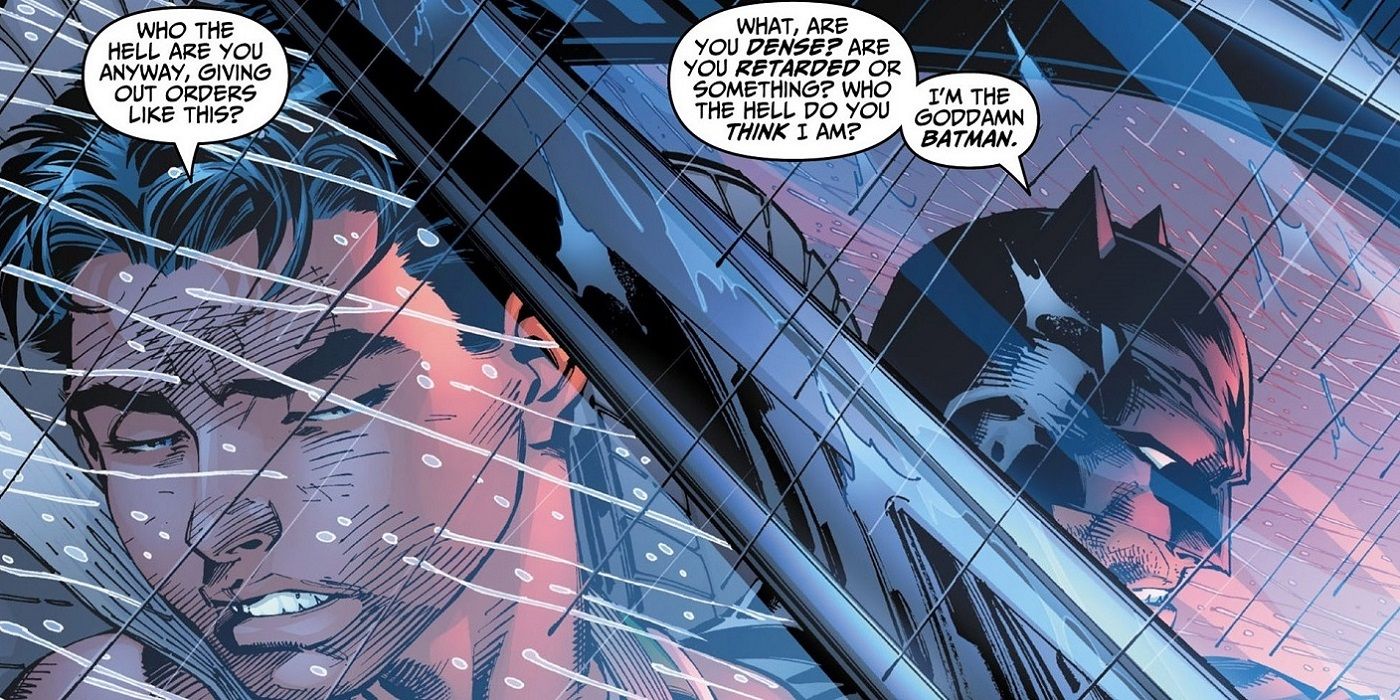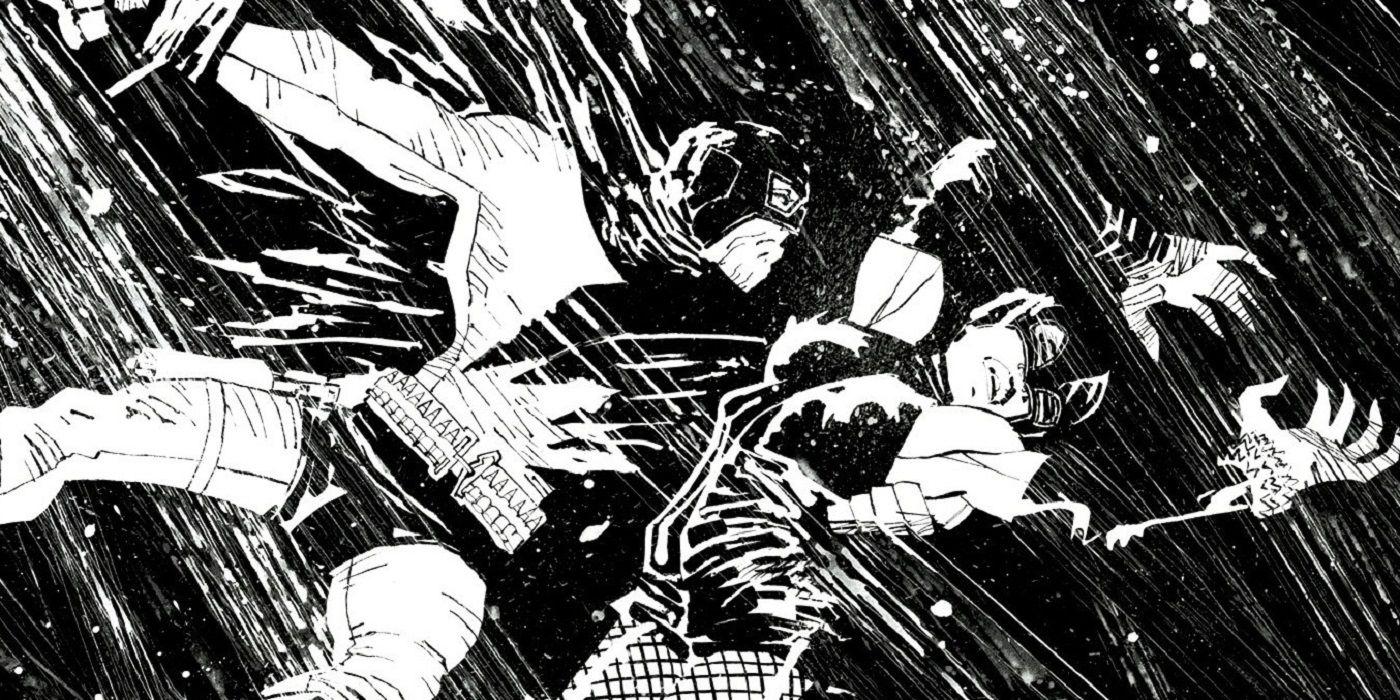Frank Miller has never been the sort of guy to sit on the fence. He’s widely acclaimed as one of the greatest comic book writers and artists ever to pick up a pen -- which is justifiable, given how many iconic titles he’s associated with -- but the visceral nature of his work has also made him one of the most controversial figures in the industry.
RELATED: Alan Moore’s Most Controversial Comic Book Stories
Miller’s certainly not afraid to bring politics into his art, nor is he worried about getting his heroes’ hands dirty. However, there are many who feel his views are far too extreme, and he’s been accused at various points throughout his 39-year career of creating material that promotes islamophobia, normalizes misogyny and glamorizes senseless violence. Love him or hate him, it’s hard to deny that his work isn’t sometimes hard to stomach, so CBR is counting down Frank Miller’s most controversial stories.
15 THE DARK KNIGHT RETURNS
For many fans, Frank Miller’s 1986 classic “The Dark Knight Returns” is the definitive Batman story. It returns an aging Batman to his roots as a merciless and uncompromising vigilante, which is how Bob Kane and Bill Finger envisioned him before ABC reduced the franchise to bright colors and cute catchphrases (although in fairness, tons of great writers besides Miller have helped reverse this status quo). For better or worse, every Batman comic and movie since its release has been formulated in its shadow, but that doesn’t mean it’s without controversy -- far from it.
The underlying implication throughout Miller’s narrative is that the good-versus-evil trope has no place in comics, nor do the concepts of impunity and invulnerability upon which most heroes rely. Miller’s Batman is a gun-wielding outlaw who bleeds like any other. He’s not automatically righteous just because he’s in costume; in fact, his presence only guarantees more crazies will come out of Gotham’s woodwork. This ideological shift towards Batman being neither good nor bad, but inevitable, helped revolutionize a genre largely reliant on pure-hearted heroes who are easily distinguishable from the villains they fight. Plus, who could forget that insanely epic fight with Superman? Coolest. Thing. Ever.
14 300
Frank Miller’s 1998 five-issue miniseries “300” is a fantastical account of the Battle of Thermopylae told from the perspective of the warrior-king Leonidas, one of the Spartans’ greatest heroes. It’s a bloody tale of passion, pride and sacrifice that won Miller and his colorist Lynn Varley considerable acclaim (including three Eisner Awards in 1999) and underwent a successful 2006 movie adaptation. However, as is common with Miller’s work, plenty of critics were angered by the comic’s more controversial elements.
Alan Moore famously called Miller out for his blatant disregard of history and advised him to “read a book.” Interestingly, his issue wasn’t with ninjas and dinosaurs turning up at the battle, or the impracticality of Spartans fighting in their underwear. Nope, what really bothered Moore was the Spartans’ homophobia towards the Athenians -- after all, pederasty was commonplace in all Grecian militaries and education systems, so having the Spartans show distain for “boy-lovers” is totally illogical. Miller also got into hot water for depicting the Persian Xerxes as a merciless conqueror and oppressor and his followers as queer and undesirable, as this was perceived by many as a heavy-handed and highly offensive allegory for Islam threatening Western ideals and values.
13 ROBOCOP
Technically, Avatar’s 2003-2006 “RoboCop” series was written by Steven Grant and illustrated by Juan Jose Ryp, but it was adapted from Miller’s script for the live-action movie “RoboCop 2” and the whole project was closely overseen by the man himself, so CBR reckons it still counts as a Frank Miller story. Miller was unimpressed with how much Irvin Kershner had diluted his brutal dystopian vision in the 1990 film (which, admittedly, wasn’t the greatest) and was enthusiastic about the idea of his story finally being told uncensored… and boy, did he get his wish!
All the tell-tale signs of a Frank Miller narrative are there: blunt racial profiling, lecherous sexism and child traumatization all appear in the first few pages of Issue #1. In one particularly memorable sequence, TV host Luke Spindle cuts straight from footage of a black youth caught looting who decides to punch the camera (instead of, y’know, looting it) to a discussion with a female cop in the studio, who Spindle then sexually harasses live on air using some of the most cringe-worthy dialog ever put to paper (“beef needle,” anyone? No? How about some “love chunks”?). All in all, not one of Miller’s finer moments.
12 RONIN
Although Frank Miller’s 1983-1984 six-issue series “Ronin” was produced during his golden-age run -- bridging the gap between his earlier work on “Daredevil” and the game-changer that was “The Dark Knight Returns” -- it’s also one of the most under-appreciated. Sure, the whole sci-fi-samurai-trapped-in-a-magical-sword-with-a-demon thing is a bit weird, but seriously, who doesn’t want to read a Frank Miller comic about “The Elvis of Violence”?! Under-appreciated it may be, but it’s picked up enough cool accolades to demonstrate its worth: it was one of the first creator-owned works published by DC, helped bring manga to a mainstream audience, and was even one of the inspirations behind the frickin’ “Teenage Mutant Ninja Turtles”!
So why is it so shocking? Well, partially because the storyline is just so insane (who else would throw leather-clad Nazis, a shapeshifting demon, robots and cannibalism together like that?), but mostly because it plays around with one of our biggest fears -- that of technology taking over -- and turns it into the stuff of brash, pulpy, adrenalin-fuelled nightmares. Yes, the whole AI-gone-psycho bit has been done before, but nobody sends the world to bloody, technological Hell quite like Frank Miller!
11 BATMAN: YEAR ONE
If “The Dark Knight Returns” is the definitive Batman story, “Batman: Year One” (produced by Miller in 1987 with help from illustrator David Mazzucchelli) is arguably the most influential depiction of his origin to date. Many fans worldwide have fallen in love with Miller’s gritty fantasy of how Batman came to be, but as always, not everyone was thrilled about some of his creative choices.
The fact that Selina Kyle makes her first appearance not as a self-reliant thief or vigilante, but a prostitute -- and a dominatrix, at that! -- controlled by a pimp (who, inevitably, Bruce Wayne ends up fighting) reinforced for many fans the perception of Miller as a misogynist who characterizes women exclusively as victims or sex objects. Similarly, some fans found it difficult to adjust to Miller’s darker vision of Gotham, in which not even the morally-upstanding citizens are able to escape the psychosis and corruption they are surrounded with: even Jim Gordon leaves his colleague beaten and demoralized in the snow and cheats on his pregnant wife. Still, that scene where the bat crashes through the window and Wayne claims his identity is a classic, and for that alone, we’d forgive Miller (almost) anything!
10 THE SPIRIT
When Frank Miller announced he and Robert Rodriguez would once again be collaborating on a movie -- this time an adaptation of Will Eisner’s “The Spirit,” which Miller contributed to in the ‘70s -- expectations were high. The duo’s last project, “Sin City,” was a critical and commercial success and fans were raring to see what they would do next… until we saw this movie, that is. Then we mainly just wondered if there was a way to undo it.
The biggest problem with “The Spirit” is that it tries to be two movies at once. Part “Sin City” rerun, part slapstick comedy, it hovers uneasily between the tongue-in-cheek jauntiness of the original source material and hard grit we all associate with Miller. There are a few controversial elements thrown in to try and keep things interesting -- babes with loose morals and an aversion to clothing, bad guys who are secretly Nazis, y’know the usual -- but mostly it’s just Samuel L. Jackson throwing around potty jokes (along with the occasional toilet) and making weird egg-related statements. “The Spirit” was absolutely shocking, and for all the wrong reasons. Not even Miller’s trademark monochrome aesthetic could save it!
9 SIN CITY: THAT YELLOW BASTARD
It’s fair to suggest that controversial storylines are the rule rather than the exception in the world of “Sin City,” and the fourth volume of Frank Miller’s series is no different: “That Yellow Bastard” is a hard-boiled noir thriller that mixes sex, violence and corruption in the most shocking ways imaginable. So what makes “That Yellow Bastard” stand out?
Maybe it’s the fact the Senator’s son, Roark Jr., is a sadistic pedophile who likes making little kids scream for him, or that he operates without fear of punishment thanks to his well-connected daddy. Or maybe it’s that Nancy Callaghan, the 11-year-old girl who escapes a grisly fate when aging do-gooder detective John Hartigan intervenes, ends up as a super-hot stripper with some very grown-up feelings towards her savior. However, perhaps the most shocking moment in “That Yellow Bastard” is also one of its finest: the epic final showdown between Hartigan and Roark Jr., in which the latter is relieved of both his “weapons” (yes, including that one) and beaten to a bloody yellow pulp. Yikes! Miller’s no stranger to tough justice, but even so, seeing a morally-upstanding cop kill so brutally is pretty controversial in CBR’s eyes.
8 SPAWN/BATMAN
The “Spawn/Batman” one-shot crossover was created back in 1994 when DC and Image Comics united two of the most exciting players in the industry at that time, Todd McFarlane and Frank Miller. For all intents and purposes, this was a match made in Heaven: McFarlane taking the lead on visuals and Miller managing the writing (which, let’s be honest, is what they’re both best at) seemed like the perfect combination. However, the end product received mixed reviews and was pretty contentious among hardcore fans.
Why? Well, although the action takes place in the same universe as “The Dark Knight” series, Miller’s characterization of Batman as an over-aggressive jerk didn’t fit with continuity or fan expectations for the Caped Crusader. His ongoing violent squabbles with Spawn, even when they’re supposed to be working together, weren’t justifiable either -- particularly the Batarang to the face Spawn suffers in the final pages. The whole comic, right down to the fighting-baddies-with-human-heads-and-robot-bodies thing, was arguably the victim of shoddy writing. Of course, hints were dropped in “Spawn” #21 about Spawn meeting a “bozo in black” this was later revealed to be Harry Houdini, thus severing this Batman/Spawn crossover connection for good. Probably for the best.
7 DAREDEVIL: BORN AGAIN
Although Frank Miller’s work during the ‘80s on various “Batman” titles has earned him a lot of love, it’s not unreasonable to suggest that his contributions to “Daredevil” had as massive an impact on the genre as anything he wrote for the Caped Crusader. If you need convincing, look no further than the “Born Again” story arc in “Daredevil” #227-233 which he produced alongside David Mazzucchelli in 1986: simply put, it’s a brutal masterpiece full of shocks, twists and thrills which to this day is yet to be out-Devilled (although Mark Waid came damn close to perfection in his recent highly-acclaimed run).
Miller’s signature brutality is present on every page, whether it’s actress-turned-porn-star Karen Page selling DD out to Kingpin for a quick fix or the excruciating detail in which Murdock describes his own bones breaking. Seeing Daredevil descend into a destructive spiral of violence and madness (helped along, of course, by Kingpin’s villainous scheming) is so shocking it’s sometimes difficult to read… okay, that’s a lie, CBR gobbled it up like candy, but seeing DD homeless, attacking random citizens and repeatedly getting beaten half to death is savage, even if it does make for a kick-ass resurrection story!
6 THE DARK KNIGHT STRIKES AGAIN
Frank Miller’s 2001 sequel to “The Dark Knight Returns,” entitled “The Dark Knight Strikes Again” (or “DK2” for short), was about as hotly anticipated as is possible for any comic to be. Fans were keen to see Batsy brought out of hiding and team up with other heroes such as Atom, Flash and Plastic Man in his battle against Lex Luthor and Brainiac. Unfortunately, the three-issue series fell painfully short of his predecessor and was full of half-baked storylines that left a lot of fans frustrated and confused.
It’s hard to know where to start when explaining what’s so shocking about “DK2.” Superman and Wonder Woman’s mid-air sex scene, which sets off a load of volcanoes, is enough to make anyone cringe, as is the damningly homophobic depiction of Hawk and Dove as incestuous lovers with porno ‘taches. At the other end of the spectrum, seeing Robin-turned-Catgirl Carrie Kelley get sliced up by Dick Grayson -- who for some reason has become a weird, knock-off Joker that likes offing superheroes -- isn’t exactly a ton of laughs either. A lot of fans feel “DK2” marked the end of Miller’s golden age and, having revisited it, it’s hard to argue otherwise.
5 GIVE ME LIBERTY
CBR has given Frank Miller a lot of stick in this list for how he treats female characters, so it’s only fair that we give a nod to a creation of his starring a bad-ass female lead who isn’t defined by her victimhood or her sexuality -- step up, Martha Washington! If you’re not familiar with “Give Me Liberty,” a four-issue miniseries published by Dark Horse Comics back in 1990 in collaboration with Dave Gibbons (another legend), then let us get you up to speed: it’s the story of how a young American woman from a public housing project called "The Green" starts a revolution that overturns the 1% of a greedy and corrupt America and ultimately brings about a second civil war.
What makes this comic so shocking in hindsight is how starkly the politics of Miller’s idealist, activist hero contrast with his own. Miller made headlines in 2011 after issuing a damning condemnation on his blog of the anti-capitalist Occupy movement -- which is essentially comprised of young idealists whose aims and ambitions align closely with that of the fictional Martha Washington -- and branded them “a pack of louts, thieves and rapists.” Perhaps he just hates tents?!
4 DAREDEVIL: THE DEATH OF ELEKTRA
When Elektra first appeared in “Daredevil” #168 in 1981, Frank Miller intended it to be a one-time thing: introducing a mysterious sai-wielding ninja made for cool filler material, and having DD describe the auditory experience of hearing her splintering bones was even cooler. Then, of course, Miller decided to bring her back in “Daredevil” #174 as a part-villain, part-love-interest for Murdock, thus setting into motion one of the most shocking and memorable story arcs ever to appear in the title: the death of Elektra.
Miller’s creative decision to have the master assassin impaled on one of her own sais by Bullseye a mere 13 issues after her debut (in “Daredevil” #181) sent shockwaves through the comic book community, particularly among female fans who felt yet another awesome female character was being “fridged” to prompt an emotional reaction from the male lead. Fan demands to bring back the character came to fruition a few years later -- firstly, in the experimental and non-canonical flashback series “Elektra: Assassin,” and later, fully resurrected in “Elektra Lives Again” -- but this never fully resolved the bad faith created by the controversial nature of her death. That said, it’s still an awesome comic!
3 SIN CITY: THE HARD GOODBYE
“The Hard Goodbye” is the first “Sin City” volume in Frank Miller’s seminal 1991-1992 graphic novel series. It’s also probably the most controversial (and that’s really saying something). Not that it’s hard to see why: the list of its offensive qualities is a rap-sheet few comics could compete with. Glorified violence? Check, Marv is a one-man killing machine. Corrupt officials? Yup, and this time they’re from the Church, so it’s blasphemous as well. Violence against women? Double check, with a little bit of cannibalism thrown in to make things even more sinister. CBR could go on and on…
Marv may maim and kill myriad strangers and be motivated by the murder of someone he barely knows, but because there’s a shred of goodness in him (the fact that he “don’t hit dames”), we happily accept him as a hero in this dystopian world. Can this simple sentiment justify a bloody and vengeful killing spree which Marv clearly enjoyed? Maybe… but probably not. Is it okay that the only woman in it who isn’t a prostitute or exotic dancer is half-eaten alive and then murdered? No, not really. Does that stop us loving “The Hard Goodbye”? Not a chance!
2 ALL-STAR BATMAN AND ROBIN
You know the deal: Frank Miller teams up with a top-notch artist (in this case, Jim Lee, whose impressive back catalog includes working on the “Batman: Hush” storyline with Jeph Loeb and collaborating with Chris Claremont on early “X-Men” issues), gets everyone’s hopes up, and then sends those hopes crashing back down to Earth with a bang. Except this time, he didn’t just make a controversial “Batman” comic… he produced what is arguably one of the worst comics ever made.
Is "All-Star Batman and Robin" really that shocking? Short answer: unfortunately, yes. Miller’s “goddamn” Batman is a psychopathic borderline-villain who throws a tantrum every time his authority is questioned and cackles like a maniac whenever he beats up a bad guy. To “recruit” Robin, Bats kidnaps him -- a child, a grieving orphan no less -- beats him up, and then forces him to join his mad crusade. That’s not edgy, that’s just god-awful foster-parenting! Sadly, the women in the comic get the trademark Miller treatment too: Wonder Woman’s a hateful misandrist now, and Black Canary? She’s a randy exhibitionist who likes the pier a bit too much. This comic’s so shocking, it’s almost a parody of itself!
1 HOLY TERROR
Of all Frank Miller’s works, none is more controversial than his 2011 standalone “Holy Terror.” In the wake of the 9/11 terrorist attacks, Miller wanted to create a propaganda piece entitled “Holy Terror, Batman!” in which the Caped Crusader defends Gotham City from Al-Qaeda. This, he reasoned, was exactly what America needed -- a superhero to punch America’s new enemy in the face. However, when Bob Schreck left DC and became editor-in-chief at Legendary Comics, Miller followed and swapped Batsy and co. for a bunch of poorly disguised stand-ins: Gotham became Empire City, Batman became The Fixer, and things got a whole lot darker.
Miller was widely criticized after the comic’s release for his misinformed and highly offensive portrayal of Muslims, and with good reason: Islam is depicted throughout “Holy Terror” as primitive and archaic, and its followers are treated with undisguised contempt. No distinction is made between Al-Qaeda and the 1.6 billion Muslims living peacefully worldwide -- to Miller, they’re all just maniacal lunatics named Mohammed who scream “Jihad!” a lot before blowing stuff up. That’s not only a profoundly messed-up worldview, but a weak basis for a cohesive and well-developed narrative. No wonder it was so unpopular!
Are there any other controversial Frank Miller stories that should’ve made the list? Let us know in the comments below!

